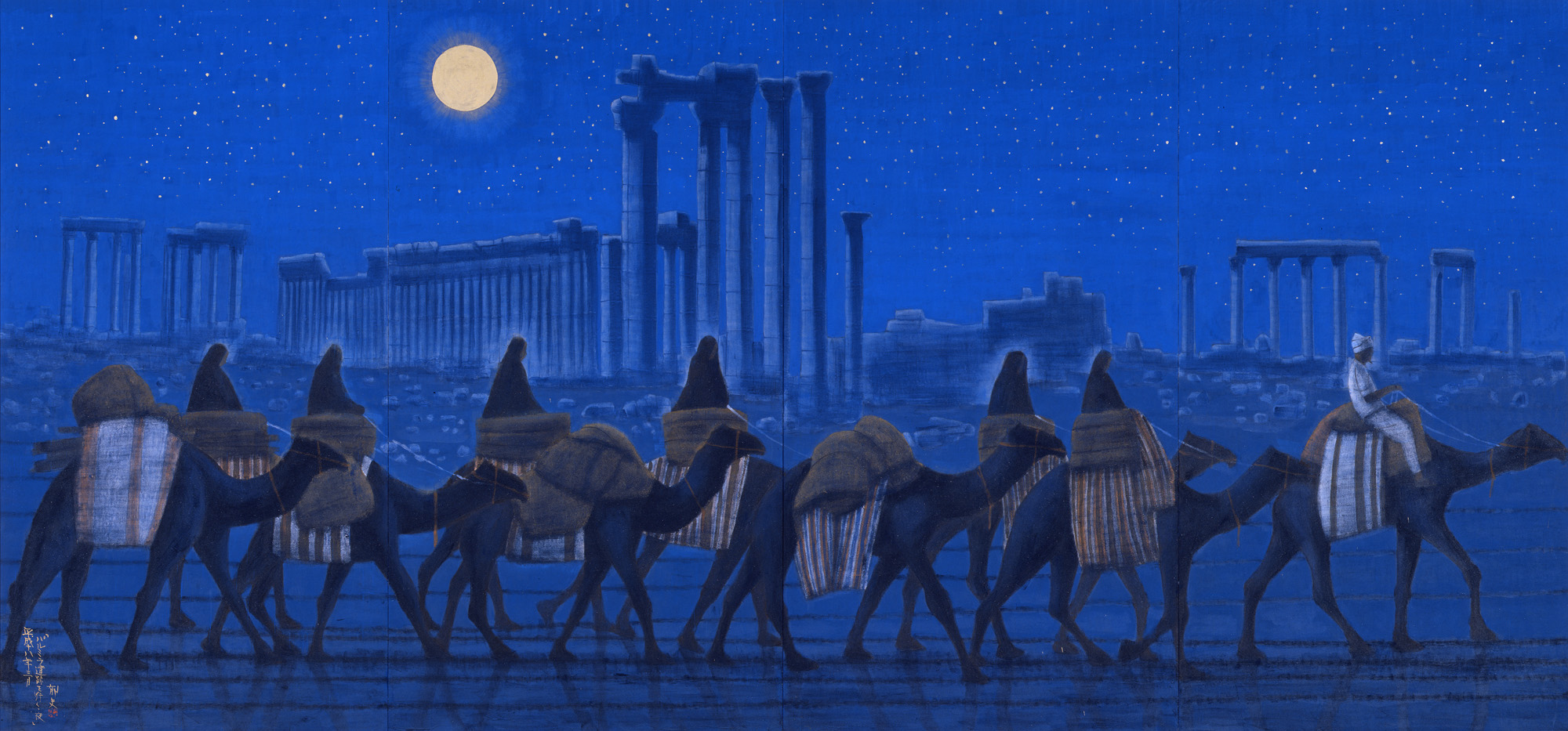To the Remains of Palmyra·Night
- Hirayama Ikuo
- 2006
- Color on Paper (Japanese Style Painting, Nihonga)
- 171.0×364.0cm
In his later years, Hirayama Ikuo published the “Great Silk Road” series of works on the theme of the caravans of merchants and camels on the Silk Road. This series of works is considered his masterpiece. This piece of work is a good example. Against the background of the Ruins of Palmyra in Syria, caravans of merchants and camels are going ahead under the sun (painted in orange color) and the moon (painted in dark blue color), the colors of which contrast sharply. In recent years, there have been repeated reports of extremist terrorist groups destroying Palmyra ruins or Syrian government forces recapturing the site. In recent years, there have been repeated reports that extremist terrorists destroyed the Ruins of Palmyra and Syrian government forces recaptured the region. As a transit point in the Silk Road trade, Palmyra underwent a period of prosperity in the past. In the late 3rd century AD, the war of independence broke out in Palmyra with the aim of breaking the rule by Rome. In the war, the city of Palmyra was sacked and destroyed by the Roman forces. The Warrior Queen of Palmyra Zenobia (240-275 AD) was paraded in chains when she was arrested. Hirayama Ikuo shows respect for Queen Zenobia by painting ladies who wear black veils in the caravan, except the man who rides the camel and leads the caravan. The desert and caravans of merchants and camels he paints symbolize cultural communication and exchanges along the Silk Road and his wishes for world peace.

